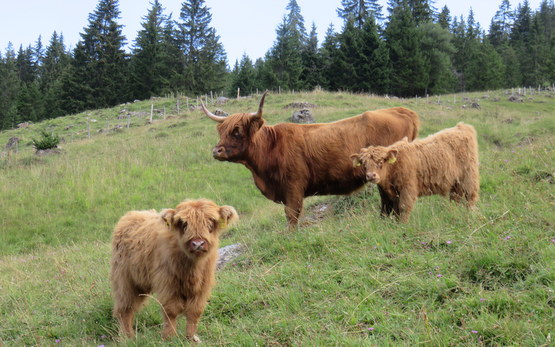Low-input pastures, among them many mountain and alpine pastures, are the most species-rich habitats in Switzerland. Centuries of grazing by cattle, sheep and goats have created open grassland, which offers habitat to numerous plants and animals.
In the past decades, grazing animals, namely cattle, have rapidly evolved. Human breeding has created breeds specialized in the production of milk or meat. These production-oriented breeds are heavier, grow faster and have a higher demand on forage quality than low-productive breeds, such as Highland cattle.
We investigate whether these differences between low-productive and production-oriented breeds have an impact on pasture vegetation. Thereby, we focus on three key differences:
- Foraging behaviour: How choosy are different breeds? Which plant species are preferred, which are avoided?
- Movement behaviour: How equally do different breeds use the pasture? How do different breeds move?
- Anatomic characteristics: Which pressure is exerted on each square centimetre of their claws?
The results show that low-productive breeds stress the grass sward less, the move less, but more homogeneously and forage less selectively than production-oriented breeds. Plant species richness is higher on pasture of low-productive that production-oriented breeds. Low-productive breeds are the key to maintain species-rich, low-input mountain pastures.






